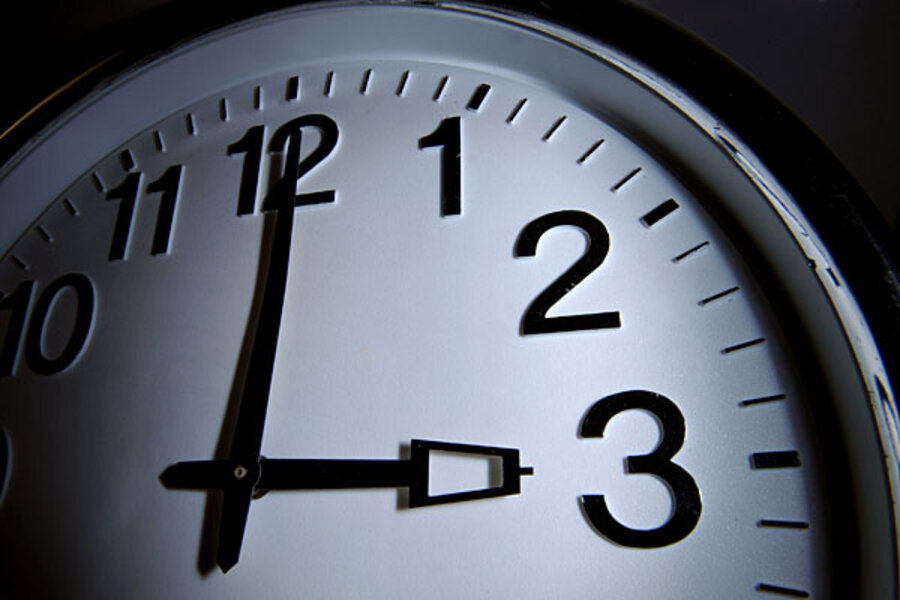Don't wind your clocks back yet, America! When is daylight savings 2010, and why does it feel so late?
Loading...
| New York
Most Americans remember that daylight savings used to occur before Halloween, allowing them or their children the chance to head out in costume an hour earlier (a real plus on school nights). Something seems amiss this year, however. It's Halloween, and the last Sunday in October, but daylight savings time still isn't over.
So many are confused, in fact, that 'when is daylight savings 2010' is one of the top searches on Google this morning.
In 2007, the US changed the time we "fall back" from the last Sunday in October to the first Sunday in November. Halloween aside, this may seem even more confusing if you look online and see all the talk about turning clocks back this morning. Don't get confused. These bloggers are across the pond in the EU.
Yes, the EU still changes their clocks on the last Sunday of October.
Daylight savings time has a more tumultuous history than you may expect, and this isn't the first time the dates have changed. Also known as "summer time" in the UK and "war time" during World War II, the seasonal time change was a hot-button political issue for most of the 20th century.
The US first legally addressed winter's shorter daylight hours in 1918, with "An Act to preserve daylight and provide standard time for the United States.'"After the end of World War I, the act was repealed as law, and daylight savings became a local option.
This created much confusion throughout the US, but the government didn't make it law again until President Franklin Roosevelt rebranded it as "War Time'"in 1942. Again, in 1945, the law was repealed and daylight savings became a local option until 1966, when the Uniform Time Act finally made daylight savings time a permanent fixture of US law.
Even then, the dates Americans set their clocks forward and back have changed repeatedly over the years. After the 1973 energy crisis, President Nixon moved daylight savings time forward all the way to January for two years before the public revolted and the April start date was restored. Again in 2005, the Energy Policy Act of 2005 mandated that the dates be changed. This time the end date was changed from the last Sunday in October to the first Sunday in November, starting in 2007.
So, while we have actually been moving our clocks back on the first Sunday of November for four years now, 2010 is the first year in which the last Sunday is also the 31st of the month, so it seems particularly late this year.





